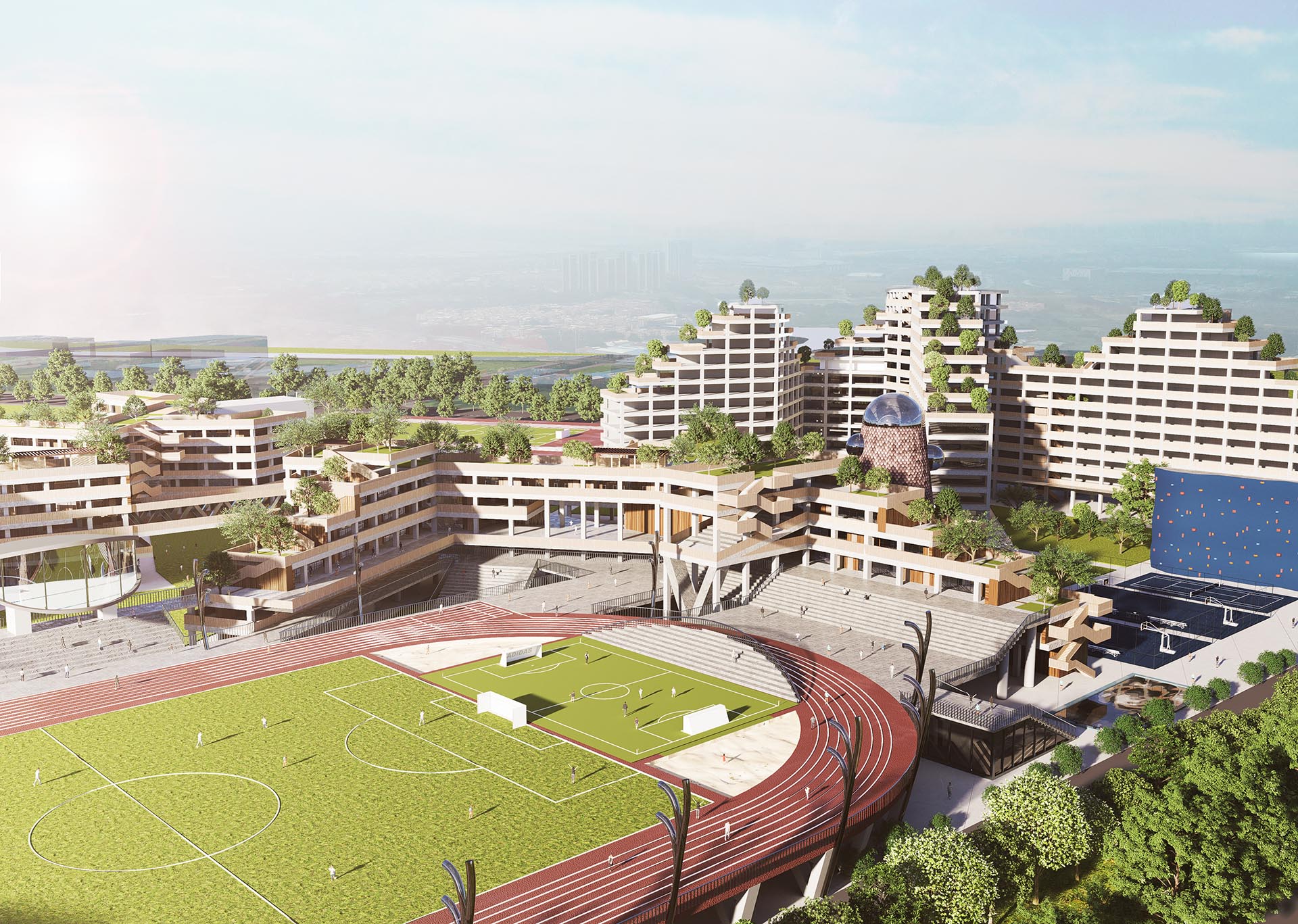A. Learning from Nature
1.Spirit of Place (Sangji Fish Pond) – The historical traces of the place give the space its qualities. The good ecological effect of the traditional Sangji Fish Pond conveys the green concepts of ecological protection and recycling, presenting a unique micro-ecological green space system that feeds generations of Foshan citizens.
2. Collective Memory (Hundred-Year Old Camphor) – The hundred-year old camphor carries the heavy history of Foshan No.1 Middle School, and the thick green shade shelters the students. After more than a hundred years, the ancient camphor tree is still green and leafy, always standing quietly here, like a “guardian god”, blessing the campus throughout the ages and being guarded by teachers and students from generation to generation.
B. Learning in Nature
1. Learning in nature – what is taught is not confined to a room, and what is learnt is not confined to a book.
According to the educational strategy of Foshan No.1 Middle School, “Cultivating high-quality modern people based on Lingnan culture”, the philosophical propositions of “nature is the religion” and “learning is important for self-acquisition” put forward by Chen Xianzhang, a great Confucian scholar of Guangdong Province, are extracted from the Lingnan culture. It is hoped that through rational campus planning, students can learn in nature, cultivate their bodies and minds in natural landscapes, and nurture their bodies and minds in a natural state. At the same time, “Learning from Nature” also echoes the philosophy of Foshan No.1 Middle School and its teaching and learning style, “Live Teaching and Live Learning” – teaching according to the material, teaching according to the time and teaching according to the place, as well as letting students learn to learn, develop their personality and innovate on their own. The school’s philosophy is to enable students to learn to learn, to develop their personality, and to innovate on their own. These concepts respond to the symbolism of the school logo – Foshan No. 1 Middle School students are like a small tree growing up in a peaceful, quiet and beautiful environment.
2. Learning in a natural state – science and humanities go hand in hand, norms and individuality coexist.
In ancient times, Confucius lectured under the tree, and now there is Foshan No.1 Middle School “Tree” teaching, all hoping for the peach and plum all over the world, “the pursuit of excellence, creating pillars”, “for the community to educate”, and for the country to develop the school Nurturing Talents for the Country. Chen Xianzhang once proposed that “I want to create an infinite reputation for the famous school for future generations” to promote the development of the school and change the style of learning in Lingnan. In the campus of Foshan No.1 Middle School, which is “free and orderly”, peaceful, serene, beautiful, inherited, open, ecological, forward-looking, suitable and cultural, students can develop their personalities while retaining their natural human nature, and adapt to each other’s minds at different ages with the interspersed and tolerant branching space and the gradual education mode. With this man and nature as one, nothing tired of the vastness of the self-satisfied life realm of the simple concept of life to guide the students, in the natural understanding of the connotation of life, to establish a correct view of righteousness and profitability, the concept of life and death, focus on self-cultivation of the inner self, self-worth of the body and the shaping of self-personality, so as to cultivate a “norms and personalities co-existing” Foshan First Middle School students. Scholars. In the fruitful space of the campus, there are science-related science and technology exhibition halls and humanities-related painting and calligraphy classrooms, etc., which also cultivate Foshan No. 1 Middle School students with the guideline of “science and humanities at the same time”.
C. Feedback to Nature
Respect nature and learn design from nature, based on the theories of “Permaculture” and “nature-inspired design”, extracting elements related to Lingnan culture and the history of Foshan First High School from nature. Based on the theory of “nature-inspired design”, based on the spirit of place and collective memory, the school extracts elements related to Lingnan culture and the history of Foshan No.1 Middle School from nature, and generates a design that conforms to the texture of the site, and at the same time, responds to nature, “from the cradle to the cradle”, and arranges rain gardens, three-dimensional greenery, and a greening system in the school as appropriate. Rain gardens, three-dimensional greenery, green light, green roofs and other sustainable facilities are arranged in the school, with the ultimate goal of linking natural cycles with industrial materials to form a constantly recycling system powered by the sun, wind, water and other natural forms of energy, relying on this clean energy source to meet a portion of the school’s needs. Organically grown buildings are inspired by nature, come from nature, and at the same time respond to, give back to, and feed into nature.
